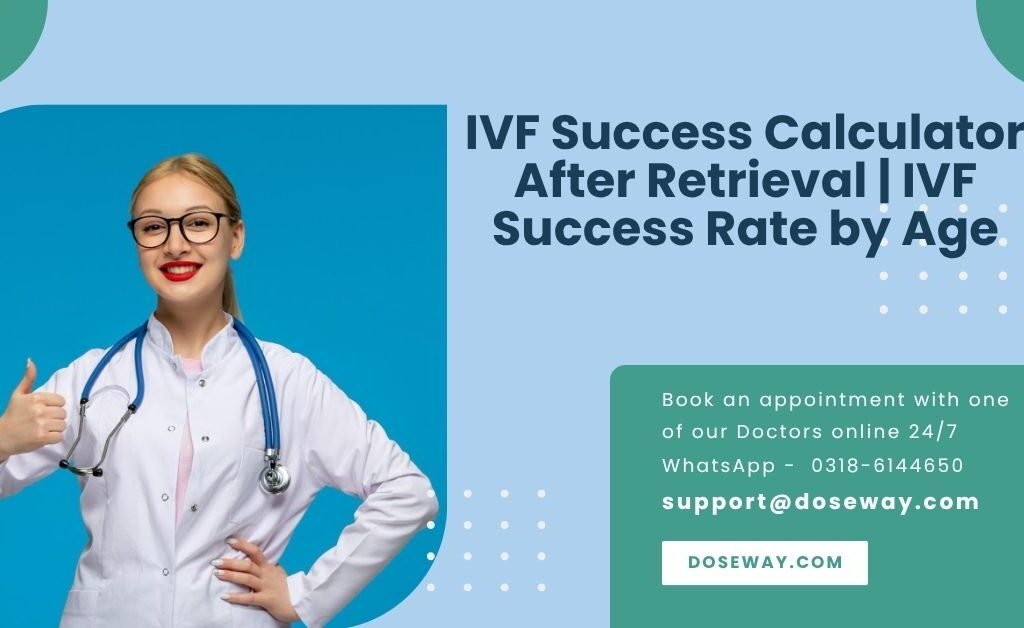IVF Success Calculator
Assess your chances of successful in vitro fertilization based on clinical factors and personal health history
Demographics
Medical History
Lifestyle Factors
Fertility History
Reproductive Health
Your IVF Success Assessment
Based on the information you provided, here is your personalized assessment
Success Probability
Interpretation
Your assessment indicates a good probability of IVF success. Factors such as your age, reproductive health markers, and lifestyle choices contribute positively to your fertility profile.
Key Factors
Age
32 years (favorable for IVF)
BMI
22.8 (Normal range)
Ovarian Reserve
AMH: 3.2 ng/mL (Good)
Lifestyle
Non-smoker with moderate alcohol consumption
Fertility History
No previous IVF cycles
Recommendations
Generating your personalized report…
Try More Free Tools:
- Try our Height And Weight Percentile Calculator (Baby Growth Percentile)
- Try our Pregnancy Protein Calculator (Daily Needs for Moms)
- Try our Protein Intake Calculator To Lose Weight

Table Of Contents
Free IVF Success Probability Calculator: Assess Your Fertility Treatment Odds
Navigating infertility challenges requires data-driven insights. Our IVF Success Calculator evaluates 20+ clinical and lifestyle factors to estimate your treatment probability. Understand how age, ovarian reserve, and health habits influence your unique fertility journey.
Recognizing Fertility Challenges
Common Indicators for IVF Consideration
Infertility affects 1 in 6 couples globally. Key symptoms include:
- Female markers: Irregular menstrual cycles, recurrent pregnancy loss, or pelvic pain
- Male markers: Low semen volume, sexual dysfunction, or hormonal imbalances
- Unexplained infertility: 15-30% of cases without identifiable causes after initial testing
Diagnostic Pathways to IVF
Reproductive specialists use these assessments:
- Ovarian reserve testing
- AMH blood tests (Anti-Müllerian Hormone)
- Transvaginal ultrasound for antral follicle counts
- Semen analysis
- Measures concentration, motility, and morphology
- Hysterosalpingography (HSG)
- X-ray evaluation of the uterine cavity and fallopian tubes
- Genetic carrier screening
- Identifies inherited conditions affecting conception
Core Fertility Metrics Explained
Age and Reproductive Potential
Fertility declines progressively:
- Women under 35: 41% IVF success per cycle
- Ages 35-37: 31% success rate
- Ages 38-40: 21% live birth probability
- Over 40: Under 12% success likelihood
AMH: Ovarian Reserve Indicator
This hormone reflects egg quantity:
- Optimal: 1.5-4.0 ng/mL
- Low reserve: <1.0 ng/mL
- High levels: May indicate PCOS
FSH: Ovarian Responsiveness
Follicle-Stimulating Hormone levels predict stimulation outcomes:
- Ideal: 3-8 mIU/mL
- Concerning: >10 mIU/mL suggests diminished response
IVF Treatment Pathways
Medical Protocol Options
- Conventional IVF
- Ovarian stimulation → Egg retrieval → Fertilization → Embryo transfer
- ICSI (Intracytoplasmic Sperm Injection)
- Direct sperm injection for severe male factor infertility
- Frozen Embryo Transfer (FET)
- Embryos cryopreserved for future cycles
Innovations Improving Outcomes
- Time-lapse imaging: Continuous embryo monitoring
- Endometrial receptivity analysis: Identifies optimal transfer timing
- PGT-A testing: Screens embryos for chromosomal normality
Enhancing IVF Success Rates
Evidence-Based Precautions
- Weight management: Maintain BMI 18.5-24.9
- Toxin elimination: Smoking reduces success by 30%
- Stress reduction: High cortisol disrupts implantation
Nutritional Optimization
Proven supplements:
| Supplement | Benefit | Dosage |
|---|---|---|
| CoQ10 | Improves egg quality | 400-600mg/day |
| Vitamin D | Supports implantation | 2000-5000 IU/day |
| Myo-inositol | Regulates ovulation | 2-4g/day |
How the Calculator Processes Your Data
Input Parameters Analyzed
- Clinical factors: Age, AMH, FSH, sperm parameters
- Health history: Previous IVF cycles, pregnancy outcomes
- Lifestyle: BMI, smoking status, exercise frequency
Probability Algorithm
A weighted scoring model prioritizes:
- Age impact (40% weighting)
- Ovarian reserve markers (25%)
- Lifestyle factors (20%)
- Sperm quality (15%)
Result Interpretation Guide
| Probability Range | Clinical Meaning | Recommended Actions |
|---|---|---|
| 60-85% | High success likelihood | Proceed with treatment; consider genetic testing |
| 40-59% | Moderate probability | Address modifiable factors (BMI/stress); expect 2-3 cycles |
| <40% | Challenging prognosis | Consult reproductive specialist; explore donor options |
Conclusion: Empower Your Fertility Journey
Our IVF Success Calculator transforms complex clinical data into actionable insights. While results provide guidance, personalized medical consultation remains essential. Remember: Your probability score reflects current biomarkers—many improve through targeted interventions.
Take your next step:
➤ Calculate Your IVF Success Probability
➤ Download the clinical PDF report for specialist review
Tool Disclaimer
This calculator provides statistical estimates only, not medical advice. Always consult qualified fertility specialists for treatment decisions.
Frequently Asked Questions (FAQs) –
Does Insurance Cover Treatment?
Coverage varies significantly:
United States: 16 states mandate partial IVF coverage
United Kingdom: NHS funds 1-3 cycles based on local criteria
Germany: Covers 50% of the costs for the first three attempts
How Many Cycles Are Typically Needed?
Cumulative success rates:
Women under 35: 94% success within 3 cycles
Ages 38-40: 50% achieve live birth after 6 attempts
Over 42: Less than 25% success after 6 cycles
Can Lifestyle Changes Improve Outcomes?
Research confirms:
Mediterranean diet → 40% higher live birth rates
Smoking cessation → 20% improvement in success
Acupuncture → Increases implantation by 15%

 Cart is empty
Cart is empty
Add a Comment